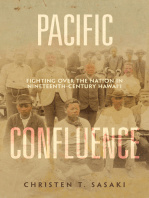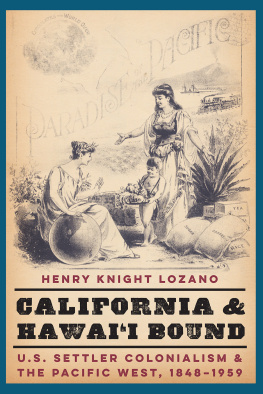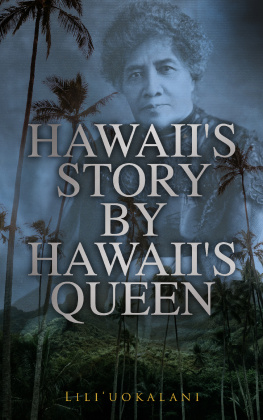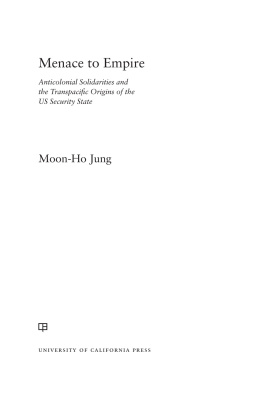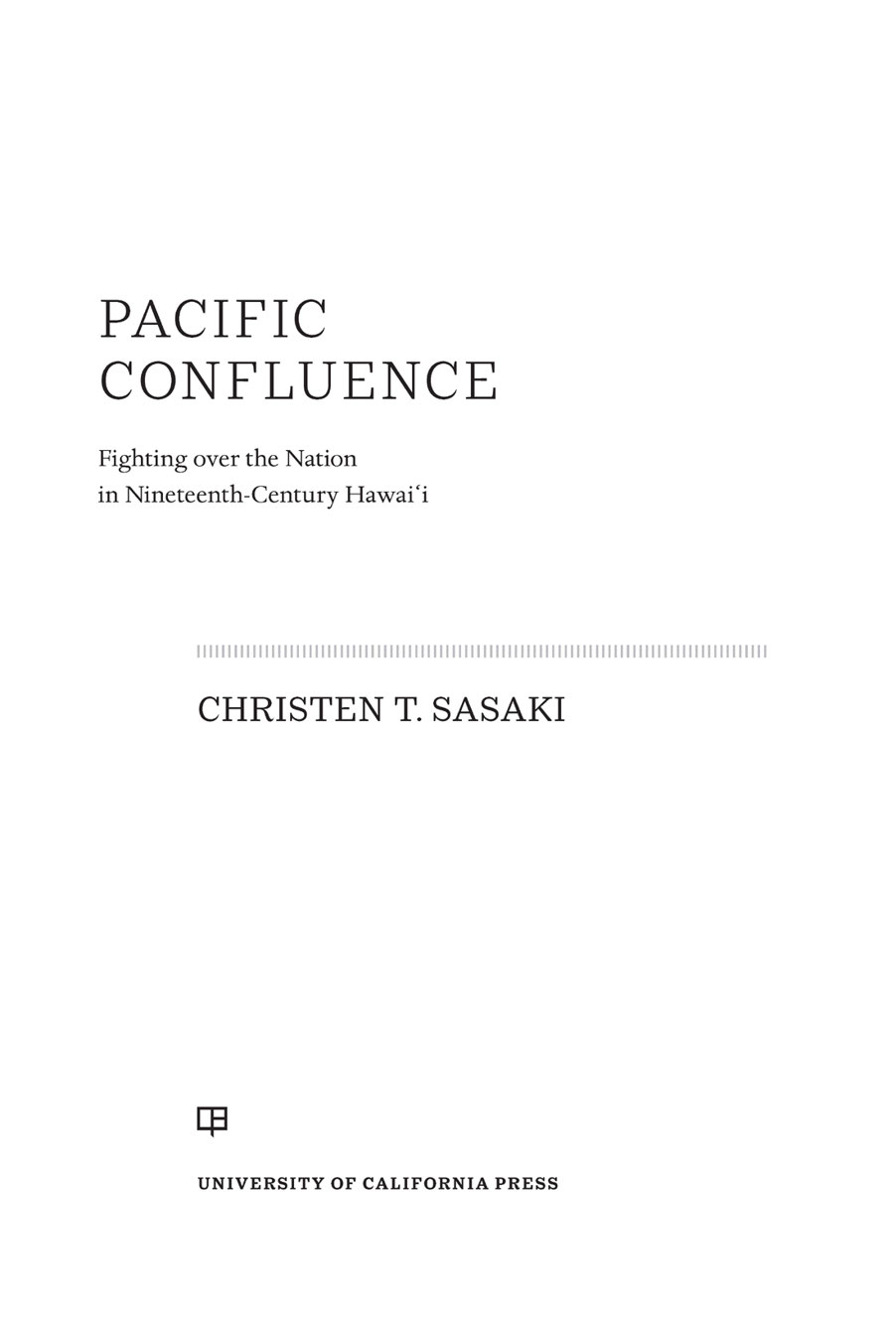
PACIFIC CONFLUENCE
Edited by Earl Lewis, George Lipsitz, George Snchez, Dana Takagi, Laura Briggs, and Nikhil Pal Singh
PACIFIC CONFLUENCE
Fighting over the Nation in Nineteenth-Century Hawaii
CHRISTEN T. SASAKI

UNIVERSITY OF CALIFORNIA PRESS
University of California Press
Oakland, California
2022 by Christen T. Sasaki
A prior version of chapter 1 was previously published in Christen T. Sasaki, Emerging Nations, Emerging Empires, Pacific Historical Review 90, no. 1 (2021): 2856. Portions of chapter 3 were previously published in Christen T. Sasaki, How the Portuguese Became White: The Racial Politics of Pre-Annexation Hawaii, in Pacific America: Histories of Transoceanic Crossings, edited by Lon Kurashige (Honolulu: University of Hawaii Press, 2017), 21328.
Library of Congress Cataloging-in-Publication Data
Names: Sasaki, Christen T., 1978 author.
Title: Pacific confluence : fighting over the nation in nineteenth-century Hawaii / Christen T. Sasaki.
Other titles: American crossroads ; 69.
Description: Oakland, California : University of California Press, [2022] | Series: American crossroads ; [69] | Includes bibliographical references and index.
Identifiers: LCCN 2022020915 (print) | LCCN 2022020916 (ebook) | ISBN 9780520382756 (cloth) | ISBN 9780520382763 (paperback) | ISBN 9780520382770 (epub)
Subjects: LCSH: Settler colonialismHawaii19th century. | NationalismHawaiiHistory19th century. | HawaiiPolitics and government19th century.
Classification: LCC DU627.2 .S37 2022 (print) | LCC DU627.2 (ebook) | DDC 996.9/02dc23/eng/20220527
LC record available at https://lccn.loc.gov/2022020915
LC ebook record available at https://lccn.loc.gov/2022020916
Manufactured in the United States of America
31 30 29 28 27 26 25 24 23 22
10 9 8 7 6 5 4 3 2 1
For Mom and Dad
Contents
1. Emerging Nations, Emerging Empires: Interimperial Intimacies and Competing Settler Colonialisms in Hawaii
2. At the Borders of Nation and State: The 1894 Constitutional Convention
3. How the Portuguese Became White: The Search for Labor and the Cost of Indemnity
4. The Shinshu Maru Affair: Barred Landings and Immigration Detention
5. Historicizing the Homestead in Wahiawa Colony: From American Family Farm to Industrial Plantation Economy
Illustrations
MAPS
1. Asia, the Pacific, and North America
2. Portugal, Madeira, the Azores, and the Cape Verde Islands
3. Wahiawa Colony, 1899
FIGURES
1. King David Kalkaua
2. Issei arriving in Honolulu, 1893
3. Members of Hui Aloha ina o N Kane, ca. 1893
4. Members of Hui Aloha ina o N Whine, ca. 1893
5. The Japanese cruiser Naniwa docked in Honolulu Harbor
6. Queen Liliuokalani attending Queen Victorias Golden Jubilee, 1887
7. Lili to Grover, cover of Judge, February 17, 1894
8. Manuel and Eugenia Reis at home in Honolulu, 1936
9. Quarantine station as seen from a ship, ca. 1912
10. People on Kamokukulikuli, or Quarantine Island, ca. 1895
11. Hawaiian Pineapple Company field laborers
12. Pineapple trimmers
Acknowledgments
OVER THE decade that it has taken to complete this book, I have been lucky to have the support of a large community of family, friends, and colleagues. Anything that is good in this work comes from them.
I was fortunate to receive funding from a number of programs and institutions including the Terasaki Center for Japanese Studies at the University of California, Los Angeles; the UCLA Asian American Studies Center; the UCLA Department of History; and the Office of Research and Sponsored Programs at San Francisco State University.
My dissertation committee provided vital support for this project that extended well beyond my years at UCLA. I wish to thank my late advisor, Janice Reiff, for her encouragement and belief in this book. I am so lucky to have spent time with such a generous scholar. I am grateful that William Marotti took in this Americanist. I would not have completed this book were it not for the constant and continued support of Keith L. Camacho.
Numerous people improved this book through conversations and comments on chapter drafts. So much gratitude goes to Emily Anderson and Todd Honma for reading countless versions of each chapter. Your comments helped me to see the stakes of this project and articulate ideas that at times felt unmanageable. JoAnna Poblete, Simeon Man, and Erin Kahunawaikaala Wright provided crucial feedback that guided my revisions. Through the generous support of the Social Sciences Division at the University of California, San Diego, I was able to host a manuscript workshop and bring together the amazing minds of Augusto F. Espiritu, Noelani Goodyear-Kapua, Simeon Man, and Wendy Matsumura. Todd Honma did the hard work of facilitating the event in the midst of a pandemic. Each of these scholars generously offered detailed notes and generative conceptual thoughts that helped me turn my dissertation into a manuscript.
I was lucky to find a collective of graduate students at UCLA who quickly became family. Alexandra Lewis Carter, Roger Chung, Eurie Chung, Steve Hosik Moon, Tadashi Nakamura, and Phuong Tang made me laugh so hard I cried. Ill always cherish the hours we spent together in the grad lounge at Campbell Hall. A big thank you goes to fellow history graduate students, Stephanie Amerian, Heather Daly, Linda Frank, Revere Greist, Lisa Hsia, Jason Marshall, Sasha Nichols, Erika Perez, Rosemary Pollock, Patrick Sharma, Aaron Silverman, Precious Singson, and Karen Wilson. Juliann Anesi, JP deGuzman, Alfred P. Flores, Brandon J. Reilly, Khaulani Vaughn, and Joyce Pualani Warren welcomed me into their intellectual collective. I am eternally grateful for our friendship and shared vision.
My colleagues at the University of Hawaii, West Oahu, SFSU, and UCSD have been a major source of support for this book. Special thanks to Leilani Basham, Laureen Chew, Joyce Chinen, Jayson Chun, Yn L Espiritu, Kei Fisher, Jos Fust, Linda Furuto, Dayo Gore, Russell Jeung, Andrew Jolivette, Ben Kobashigawa, Mai-Nhung Le, Jonathan Lee, Dawn Bohulano Mabalon, Eric Mar, Amy Nishimura, Eric J. Pido, Alan Rosenfeld, Anantha Sudhakar, Amy Sueyoshi, Erin Suzuki, Allyson Tintiangco-Cubales, Wesley Ueunten, K. Wayne Yang, and Grace J. Yoo. I am grateful to be part of a writing group at UCSD with Theresa Ambo, Ross Frank, Curtis Marez, Kiana Middleton, Shaista Patel, Roy Prez, and Shelley Streeby. Thanks as well to the AAPI History Group for providing me with a space to share my work and gather such rich feedback.
Through the conversations that weve had over shared meals and across different conferences over the years, many people have helped to sharpen this books arguments and have offered timely support. Special thanks to Eiichiro Azuma, Tracy Buenavista, Gordan Chang, Constance Chen, Catherine Ceniza Choy, Cati V. de los Rios, William Deverell, Candace Fujikane, Jordan Beltran Gonzales, Vernadette Vicua Gonzalez, Michie Hirooka, Lauren Hirshberg, Madeline Hsu, Justin K. Ichida, David Igler, Mariko Iijima, Lon Kurashige, Roderick Labrador, Maxwell Leung, Valerie Matsumoto, Andrea Mendoza, MyLinh Nguyen, Franklin Odo, Mark Padoongpatt, Christine Quemuel, Jeanette Roan, Dean Saranillio, Charles Sepulveda, Laith Ulaby, Kathryn Walkiewicz, Susie Woo, Judy Tzu-Chun Wu, David Yoo, Mari Yoshihara, Henry Yu, and James Zarsadiaz. My Friday afternoon pandemic writing group partners, Dana Nakano and Todd Honma, have been an emotional and intellectual lifeline.
Next page
